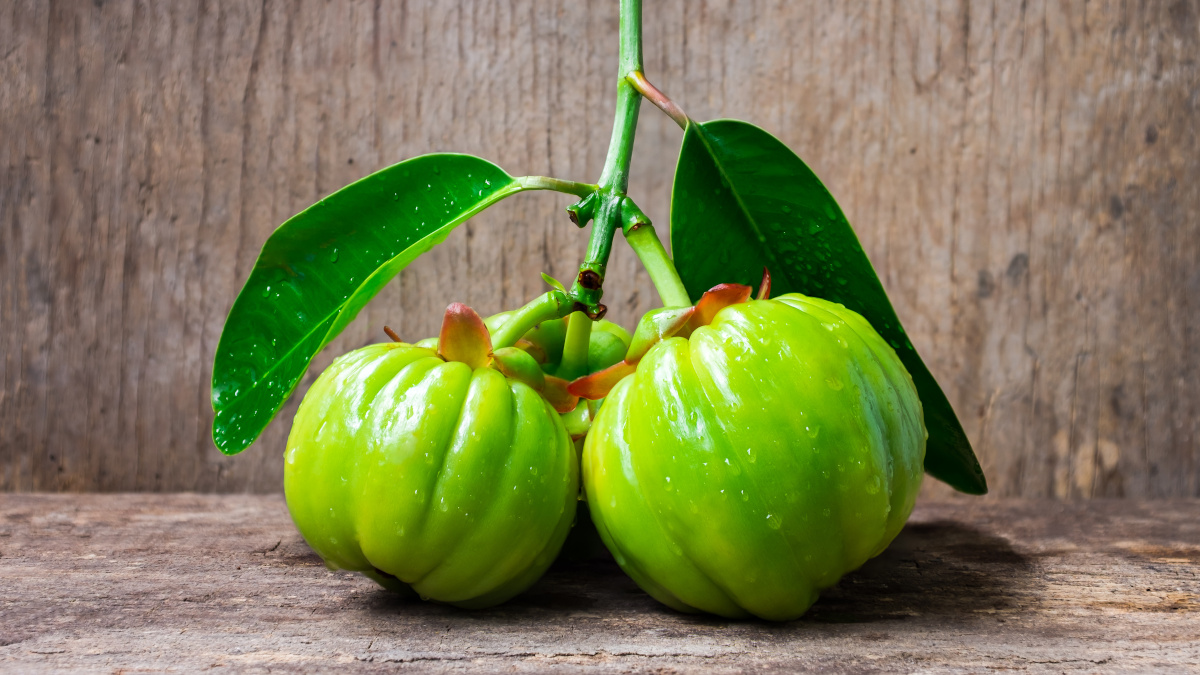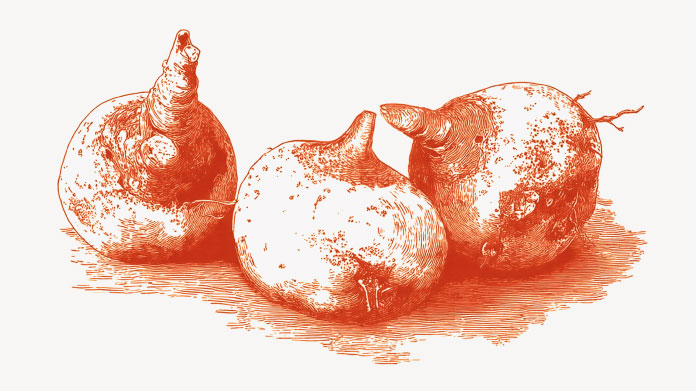Can Garcinia cambogia really help you to lose weight?
Garcinia cambogia is often referred to as an excellent aid to slimming. Can this Indonesian fruit genuinely help with weight control?

What exactly is Garcinia cambogia?
Garcinia cambogia is a small tree with green or yellow fruit, native to Indonesia. It’s also known by several other names:
- Garcinia gummi-gutta ;
- Kudam puli ;
- Brindleberry;
- Malabar tamarind ...
The fruit’s peel is a popular ingredient in Asian cuisine
In both India and Thailand, the peel of the Garcinia fruit is widely used as a flavouring agent.
It’s also taken in the form of a decoction.
What is the fruit’s active ingredient?
The Malabar tamarind, or more specifically, its peel, contains hydroxy citric acid (HCA).
This compound is an inhibitor of ATP citrate lyase which is involved in the production of fatty acids. It’s thought the regulatory effect of this ingredient is responsible for the plant’s highly specific benefits.
In fact, Garcinia is currently considered to be the only known significant source of HAC.
What have clinical trials revealed about Garcinia?
The majority of recent clinical trials confirm the efficacy of Garcinia as an aid to weight control(1-9).
One randomised, double-blind Japanese study concluded that an extract of the fruit helps to reduce the accumulation of abdominal fat, without causing any rebound effect (10).
A Spanish study reached similar conclusions, noting that Garcinia cambogia extract promotes weight control and helps to regulate sugar and lipid levels in the blood (11).
The benefits of Garcinia cambogia
In summary, the many studies conducted demonstrate that Garcinia cambogia helps to:
- control body weight;
- decrease the amount of fat stored in the body;
- reduce the sensation of hunger and urge for sugary treats;
- maintain normal blood sugar levels (12).
Thus it constitutes a highly beneficial compound for supporting weight control.
What’s the correct dosage?
Would you like to start supplementing with Garcinia?
If so, the dose generally recommended is between 1500 and 2200mg a day, to be taken 30 minutes before a meal. Supplementation can be continued for a period of 3 months.
Which Garcinia cambogia supplement should you choose?
An easy way to benefit from Garcinia’s properties is to take dietary supplements generally available in tablet form. Opt for a supplement with a high level of hydroxy citric acid.
The product Garcinia cambogia, for example, provides you with 2200mg of Garcinia rind a day and is standardised to 60% hydroxy citric acid for enhanced effects.
Caution: this plant is not recommended for those suffering from significant liver problems, or who are taking anticoagulants, statins, anti-histamines or iron supplements.
References
- Kim YJ, Choi MS, Park YB, Kim SR, Lee MK, Jung UJ. Garcinia Cambogia attenuates diet-induced adiposity but exacerbates hepatic collagen accumulation and inflammation. World J Gastroenterol. 2013;19(29):4689-4701. doi:10.3748/wjg.v19.i29.4689
- Onakpoya I, Hung SK, Perry R, Wider B, Ernst E. The Use of Garcinia Extract (Hydroxycitric Acid) as a Weight loss Supplement: A Systematic Review and Meta-Analysis of Randomised Clinical Trials. J Obes. 2011;2011:509038. doi:10.1155/2011/509038
- Preuss HG, Bagchi D, Bagchi M, Rao CV, Dey DK, Satyanarayana S. Effects of a natural extract of (-)-hydroxycitric acid (HCA-SX) (etc.) weight loss. Diabetes Obes Metab. 2004 May;6(3):171-80. doi: 10.1111/j.1462-8902.2004.00328.x. PMID: 15056124.
- Westerterp-Plantenga MS, Kovacs EM. The effect of (-)-hydroxycitrate on energy intake and satiety in overweight humans. Int J Obes Relat Metab Disord. 2002 Jun;26(6):870-2. doi: 10.1038/sj.ijo.0801979. PMID: 12037659.
- Roongpisuthipong C, Kantawan R, Roongpisuthipong W. Reduction of adipose tissue and body weight: effect of water soluble calcium hydroxycitrate in Garcinia atroviridis on the short term treatment of obese women in Thailand. Asia Pac J Clin Nutr. 2007;16(1):25-9. PMID: 17215177.
- Preuss HG, Garis RI, Bramble JD, Bagchi D, Bagchi M, Rao CV, Satyanarayana S. Efficacy of a novel calcium/potassium salt of (-)-hydroxycitric acid in weight control. Int J Clin Pharmacol Res. 2005;25(3):133-44. PMID: 16366421.
- Opala T, Rzymski P, Pischel I, Wilczak M, Wozniak J. Efficacy of 12 weeks supplementation of a botanical extract-based weight loss formula on body weight, body composition and blood chemistry in healthy, overweight subjects--a randomised double-blind placebo-controlled clinical trial. Eur J Med Res. 2006 Aug 30;11(8):343-50. PMID: 17052970.
- Kovacs EM, Westerterp-Plantenga MS. Effects of (-)-hydroxycitrate on net fat synthesis as de novo lipogenesis. Physiol Behav. 2006 Jul 30;88(4-5):371-81. doi: 10.1016/j.physbeh.2006.04.005. Epub 2006 May 24. PMID: 16725163.
- Toromanyan E, Aslanyan G, Amroyan E, Gabrielyan E, Panossian A. Efficacy of Slim339 in reducing body weight of overweight and obese human subjects. Phytother Res. 2007 Dec;21(12):1177-81. doi: 10.1002/ptr.2231. PMID: 17639559.
- Hayamizu K, Ishii Y, Kaneko I, et al. Effects of garcinia cambogia (Hydroxycitric Acid) on visceral fat accumulation: a double-blind, randomized, placebo-controlled trial. Curr Ther Res Clin Exp. 2003;64(8):551-567. doi:10.1016/j.curtheres.2003.08.006
- Maia-Landim A, Ramírez JM, Lancho C, Poblador MS, Lancho JL. Long-term effects of Garcinia cambogia/Glucomannan on weight loss in people with obesity, PLIN4, FTO and Trp64Arg polymorphisms. BMC Complement Altern Med. 2018;18(1):26. Published 2018 Jan 24. doi:10.1186/s12906-018-2099-7
- EFSA Register of Questions - Europa EU
Keywords
2 Days
Quality products
Quality products , efficient and effective customer service. You can’t ask more
CLaudia
9 Days
Good quality product and customer service.
So far, I'm liking this product, and the customer service was very good.
ELZL
15 Days
The products I use are excel·lent
The products I use are excel·lent
ROSAS Josep Maria
23 Days
Delivery is prompt and I never saw a…
Delivery is prompt and I never saw a quality problem with the manufacturing. It is not possible to assess efficacy on a personal basis, since too many factors come into play. Efficacy can only be assessed statistically with a sufficient number of cases.
Roger De Backer
24 Days
I collaborates with the Supersmart…
I collaborates with the Supersmart more than 10 years. Every thing is going good. Quality of the things is good. Delivery comes in time. Five stars definitely !!!
Oleksiy
24 Days
All good
Simple, frictionless site, easy ordering, good delivery updates and execution.
Chris Robbins
26 Days
I feel better
I feel better
Peter Ammann
27 Days
Prompt delivery
Prompt delivery
JAKUB Radisch
28 Days
My new go-to for top quality supplements!
I am buying more and more of my supplements from this superb, high quality company. Cannot recommend it enough. Plus, excellent customer service with a quick, helpful team and speedy deliveries. Highly recommend Supersmart!
Cecilie H.
32 Days
SUPERSMART WHAT ELSE👍
SUPERSMART WHAT ELSE👍
DIEDERLE Christophe
34 Days
Excellent quality products with…
Excellent quality products with innovative formulas, as someone who has been suffering with acid reflux, these supplements have been lifesavers.
Oriana Moniz
35 Days
high quality supplement!
high quality supplement!
GALANT
35 Days
Good service prompt delivery
Good service prompt delivery
Mrs Marcella Reeves
40 Days
I like your clear explanation
I like your clear explanation. And how to make a choice of products for a specific health problem
Ingrid
46 Days
Great product and it arrives quickly.
Great product and it arrives quickly.
SOMMARIVA Gianni



